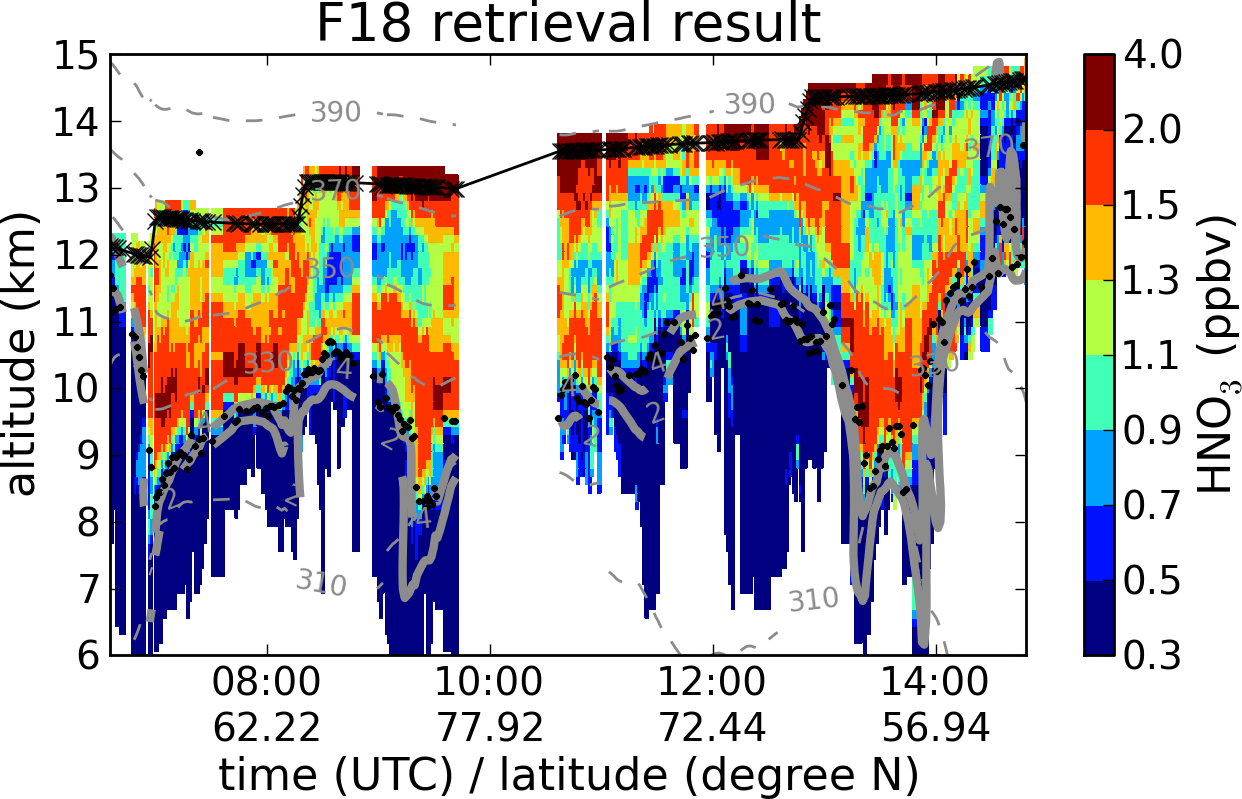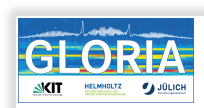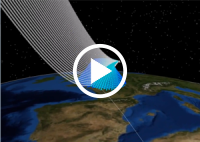In dynamics mode, the GLORIA instrument sacrifices spectral resolution for a better spatial sampling. Additionally, it pans horizontally in between measurements to cover the same target volume from multiple angles. One measurement takes around 1.5 seconds which corresponds to a spatial sampling of around 300 meters, depending on aircraft velocity. For illustration see the video below:
This operational mode is particularly suited for the investigation of dynamic processes, such as stratosphere-troposphere exchange. The principal retrieval targets are temperature, O3, HNO3, CFC-11, CFC-12 and H2O.
The C++/Python-based JURASSIC2 retrieval processor combines a fast forward model (The JUelich RApid Spectral Simulation Code) with the JUelich Tomographic Inversion Library (JUTIL). Instead of line-by-line emissivity calculations, JURASSIC2 uses pretabulated optical paths for its radiative transfer calculations. With sparse linear algebra, an automatic derivative of the forward model, and OpenMP and MPI parallelization, even the retrieval of multiple trace gases on a 3D grid with 107 unknowns becomes possible. This tomographic technique allows us to obtain more accurate spatial information, especially along the line of sight.
Aside from tomographic inversion, standard 1D retrievals and the retrieval of multiple profiles with horizontal regularization is performed.
 |


